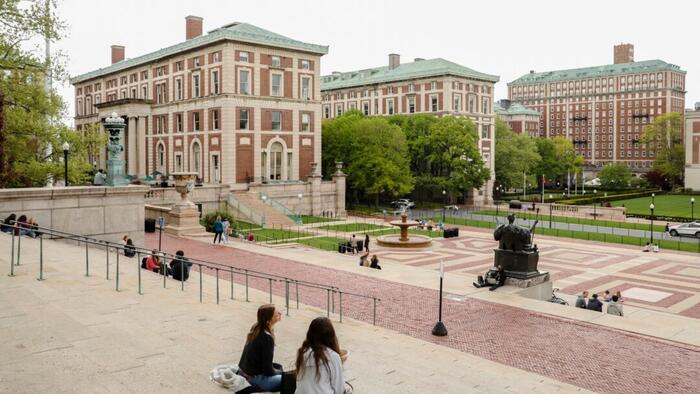


Authored by Kenneth Tashky via The Epoch Times,
When it was recently reported that protesters disrupted Columbia University’s graduation ceremony, one might ask: which one?
In addition to its main commencement, Columbia hosts no fewer than 10 separate graduation ceremonies, often referred to as affinity graduations. These include distinct events for black, Latino, Asian, LGBTQIA+, Jewish, native, international, disabled, and first-generation/low-income students.
While Columbia claims that it has a “long history” of offering race-based and other segregated graduation ceremonies, this practice only dates back to 2005.
To put this in perspective, Columbia was founded in 1754. For more than 250 years, the university held a single, unified commencement ceremony for all graduates, celebrating their shared academic achievements without division by race, ethnicity, or gender identity.
Rather than continuing to use commencement to reinforce the institution’s collective mission and foster cohesion around a common student experience, Columbia has chosen to separate and segregate students based on race and other identity-based characteristics.
Columbia is not alone. Numerous institutions, including Princeton University, American University, Penn State University, University of Colorado, Fresno State University, and the College of William and Mary, host graduation ceremonies based on what a student looks like, their sexual preferences, who they pray to, or their ancestry.
These programs prioritize individual identity over the collective and common student experience, separating the campus into demographic silos and undermining the shared values, accomplishments, and sense of community that higher education is meant to cultivate.
Segregating students in this manner is not just limited to graduation programs. Across higher education, students are sorted into housing, orientation programs, and campus organizations based on their race and other identifying factors.
The National Association of Scholars has described the practice as “neo-segregation,” resembling a modern, albeit more palatable, version of the discriminatory and unconstitutional “separate but equal” doctrine.
Aided by college institutions, minority students are “simply conscripted to the new racially segregated normal.”
What is astonishing about this practice is that it’s being carried out by the very same higher education industry that has long proclaimed the indispensable value of achieving student body diversity and inclusion.
We have been told for years that creating diversity in higher education is essential to the educational experience and prepares students to participate in an increasingly complex and pluralistic society.
According to Lee Bollinger, former president of the University of Michigan and Columbia University, racial diversity “is vital” to the student experience. “Diversity is not merely a desirable addition to a well-rounded education. It is as essential as the study of the Middle Ages, of international politics and of Shakespeare.”
Paul Alivisatos, president of the University of Chicago, regards racial diversity and inclusion as essential to his institution’s educational mission, describing it as “foundational to our academic success” and “providing a transformative education for our students.”
Yet while higher education continues to champion racial diversity as fundamental to its mission, its current practices reveal a troubling contradiction.
Institutions cannot achieve the fundamental promise that diversity fosters greater connection and mutual understanding between students if they are promoting or permitting division and disunity based on the very characteristics diversity is purportedly intended to embrace.
If diversity is to have any real value to the educational experience, it cannot be realized by dividing students into demographic groups and “celebrating” them in isolation.
Rather, it requires bringing people together—across lines of race, class, gender, and ideology—to engage in the hard, messy and challenging work of learning from one another as individuals.
More than two decades ago, the late U.S. Supreme Court Justice, Antonin Scalia, issued a blistering dissenting opinion warning higher education against segregating students based on race under the pretense of promoting student diversity and inclusion.
Skeptical of using race as a factor in college admissions to engineer diversity, Scalia strongly denounced “those universities that talk the talk of multiculturalism and racial diversity in the courts but walk the walk of tribalism and racial segregation on their campuses through minority-only student organizations, separate minority housing opportunities, separate minority student centers, even separate minority-only graduation ceremonies.”
At the time, some may have discounted Justice Scalia’s warning as the cynical musings of a conservative jurist. Now, with the benefit of time, his words appear prophetic and cast a long shadow over the current trend of racial segregation prevalent throughout higher education.
Scalia’s cautionary note also raises legitimate questions about the value and necessity previously attributed to achieving student body diversity if, once attained, students and their institutions conspire to impose self-segregating programs and activities.
Ultimately, higher education cannot have it both ways. It cannot, on the one hand, champion diversity as a unifying force, fundamental to its educational mission, while on the other promote and encourage practices that fragment students along lines of identity and difference, undermining the very mission it claims to uphold.
Justice Scalia was prophetic, indeed.
* * *
Views expressed in this article are opinions of the author and do not necessarily reflect the views of The Epoch Times or ZeroHedge.
